500 Gallon Underground Storage Tank Removal
The three most common sizes of heating oil tanks in Delaware, Pennsylvania and New Jersey are 290, 500 and 1000 gallons. We will discuss removal of a 500 gallon tank. On average most oil tanks will be buried about 18" to 24".
A 500 gallon tank is 48" in diameter and 5'5" long. (Some people profess to have a 550 UST, which is a bit less common in size than a 500 gallon oil tank). To remove the tank you have to dig a hole larger than the footprint of the tank. The photo below shows the area or footprint above the tank that is required to be uncovered to access the tank.
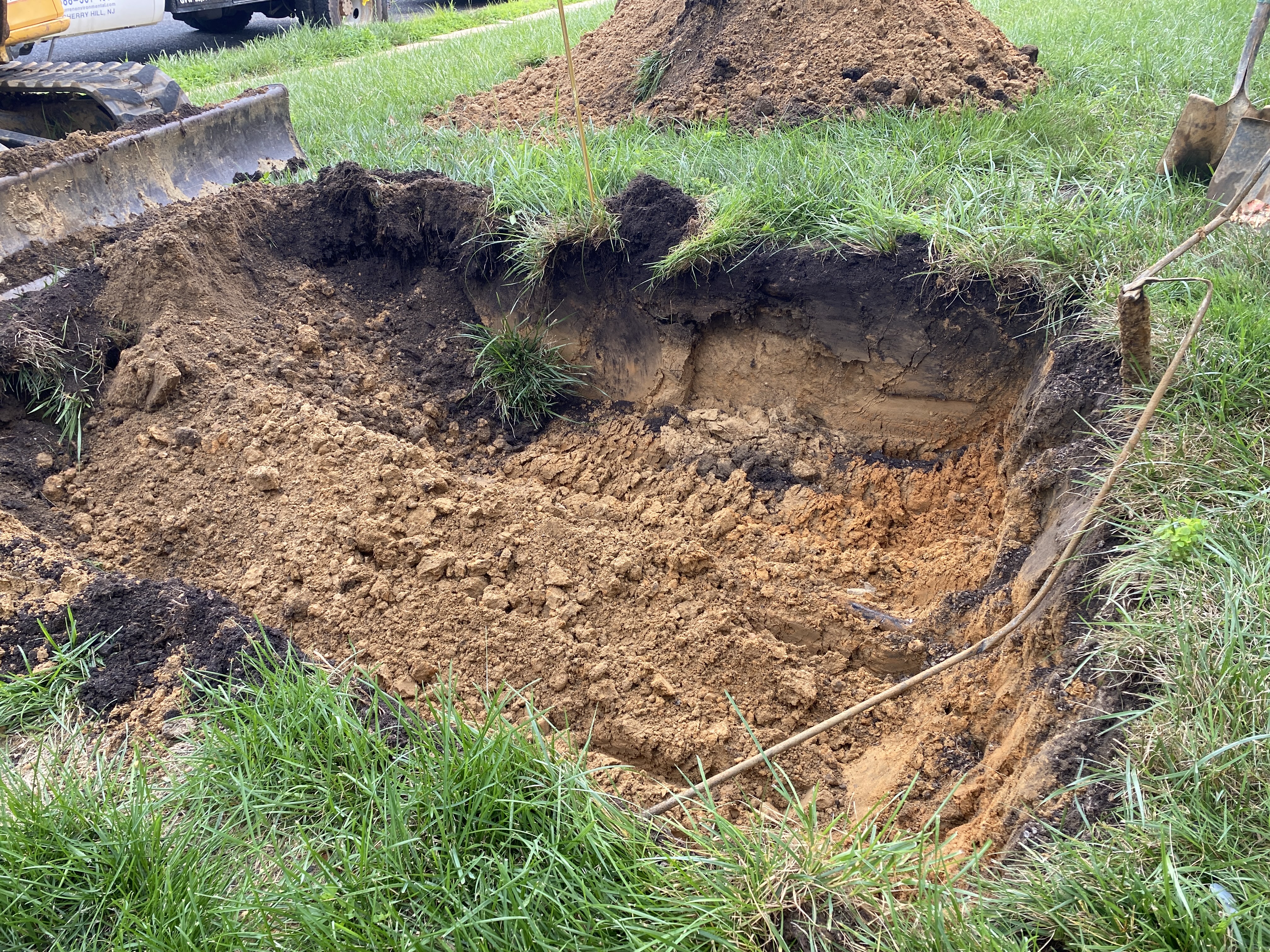
The next photo shows you the top of the tank and you can see how the excavation is longer and wider than the tank.
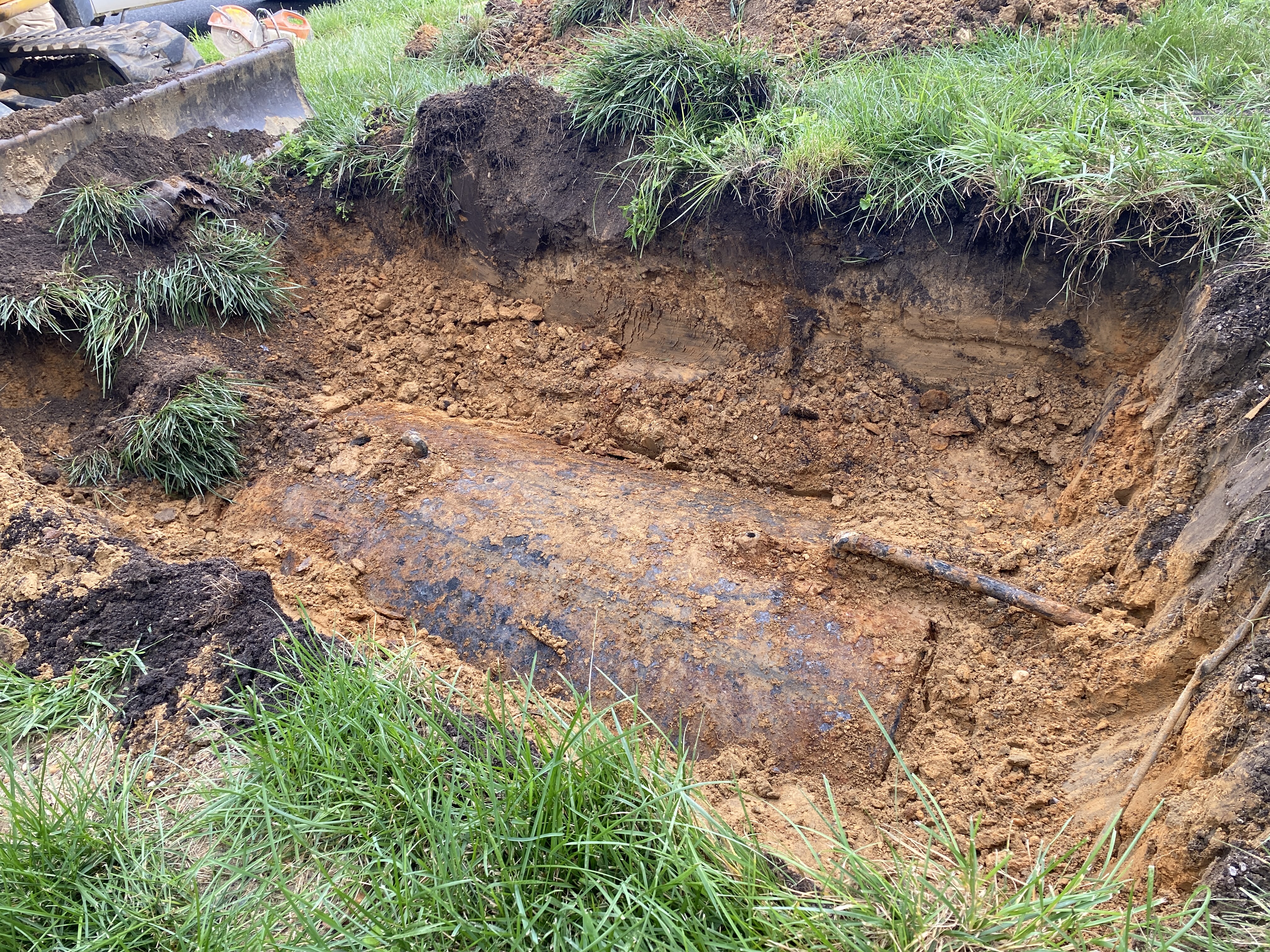
Once the tank is uncovered and before you remove the tank, you have to enter and clean the tank. This photo shows the access hole cut into the tank to allow human entry.

Yes to properly (properly means thoroughly) clean a tank you have to go inside the tank.

Once the tank is cleaned it can be removed. You don't remove the tank before cleaning because if there are any holes in the tank, clearly oil would leak out if you removed a tank that had liquid in it.

After you remove the tank, soil samples are acquired. This photo show the concave bottom of the excavation. The vert or bottom of the excavation is referred to as the tank centerline or tank invert. It is this depth where you acquire your soil samples. For a 500 gallon UST you would acquire 2 soil samples for laboratory analysis.

In addition to soil sampling, you will inspect the tank aboveground. As you can see the tank still has a fair amount of soil attached to it. So you will bang on the tank (like a gong) to remove these soils so you can expose bare metal and evaluate the tank for holes.
*You also need to remove these stuck on soils because our roads have pot holes and bumps which would shake the dirt off on the road and sending it onto windshields potentially cracking the windshield.
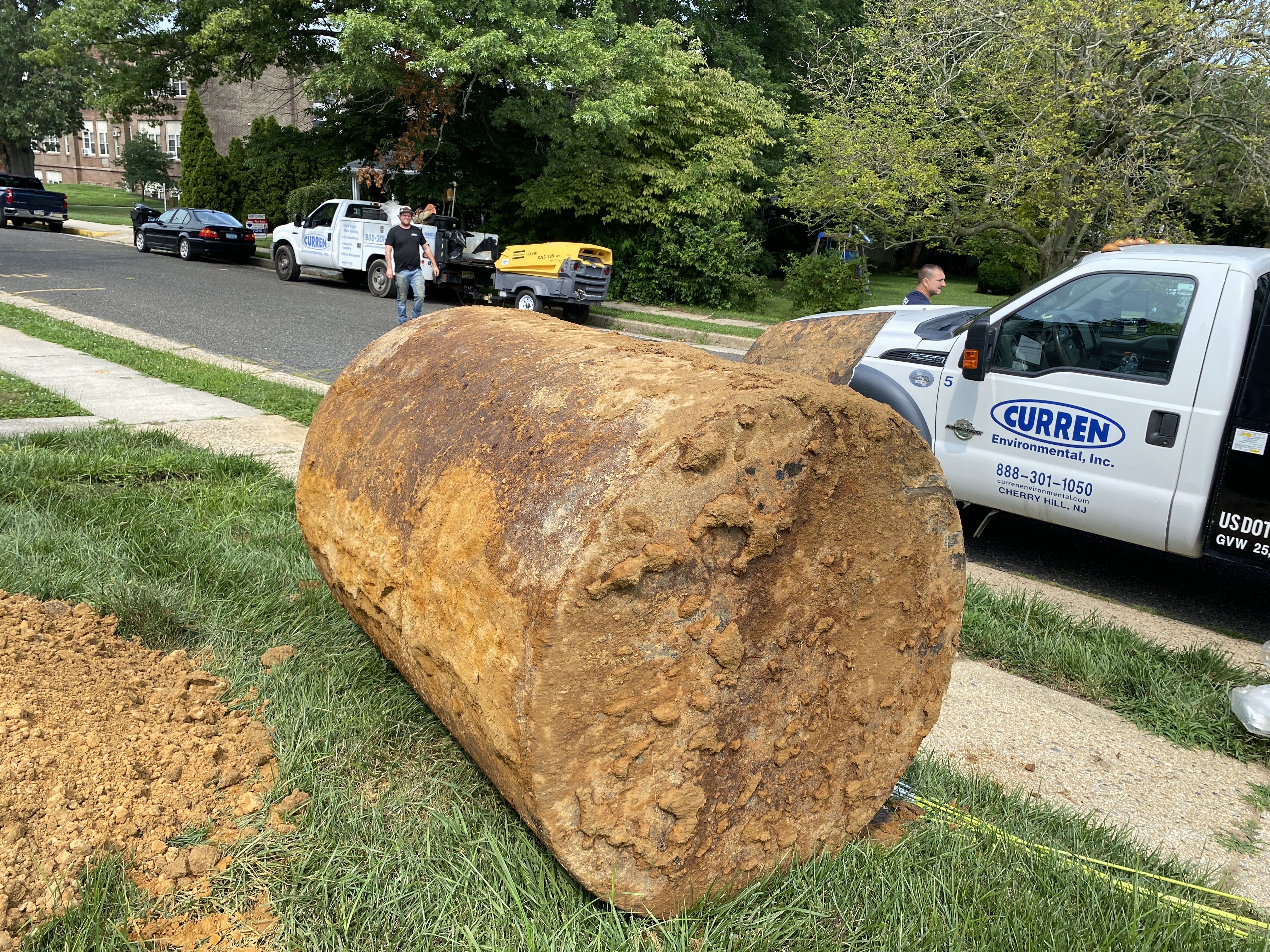
A common misconception we get from people who had their tank removed is that the company made holes in their tank by banging on it. Lets be real you could bang on a tank for hours and you are not putting a hole in it. The photo below shows cut outs of various tanks, coins are interspersed between the pieces to give you a perspective regarding gauge or thickness of the oil tank. Even though these pieces are all of different gauges, you can see how thick they are and no one is going to punch a hole through the metal.
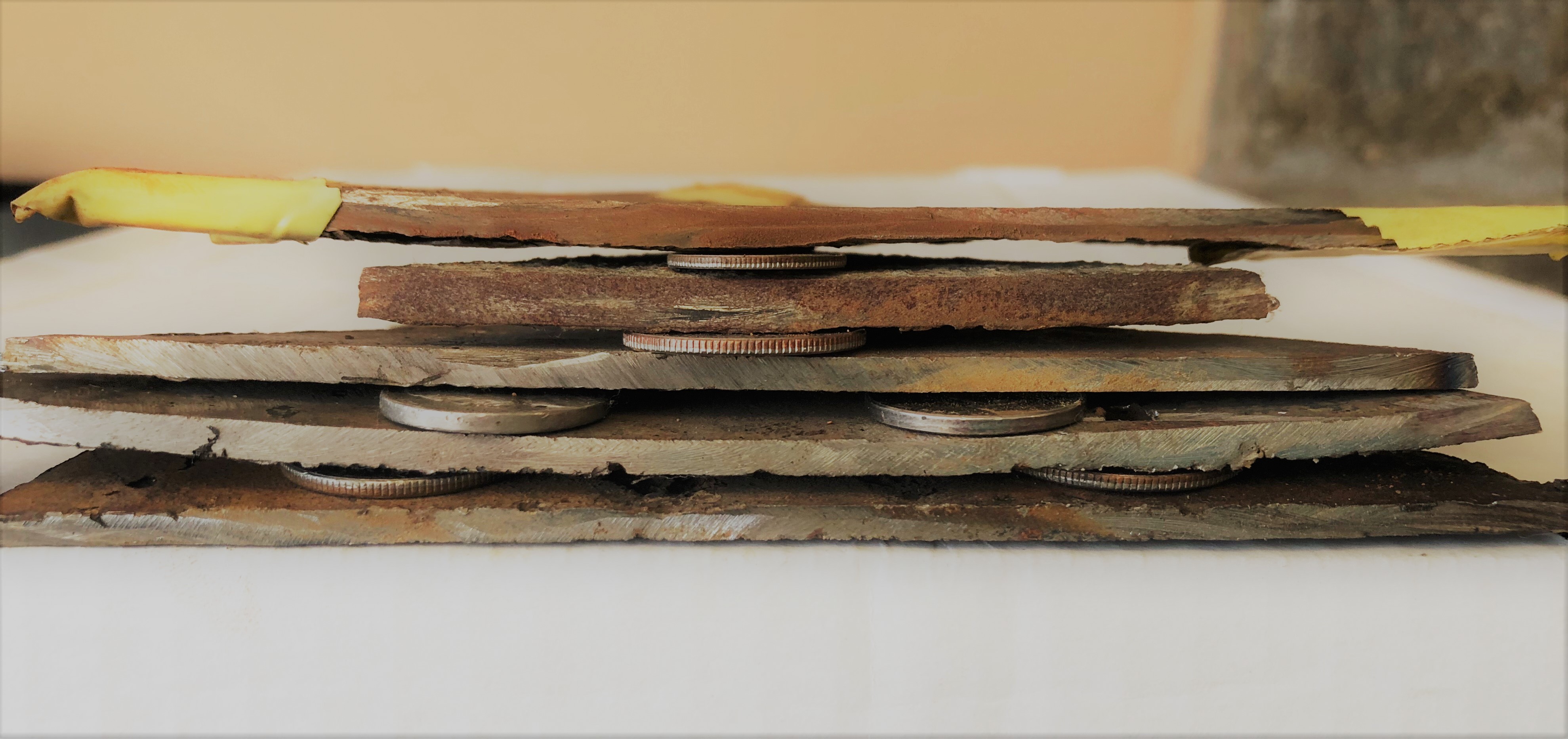
When holes suddenly become visible after banging on the tank it is because years of corrosion have occurred removing layers of steel (Its called corrosion but means Rust Never Sleeps). The holes become visible as oil leaked through the corrosion holes and made the soil stick to the tank to an extent, the banging on the tank more or less unsticks the soils.
Ok so you removed the tank, took your samples (after local inspection is performed to verify you actually removed a tank), you backfill the area with a clean fill brought to the site. A 500 gallon oil tank requires 500 gallons of soil or 2.5 cubic yards of fill to backfill the tank void. You can't buy sand by the gallon.

Once the 500 gallon tank excavation is backfilled you are ready for top soil and seed. (Typically not performed as part of the tank removal.
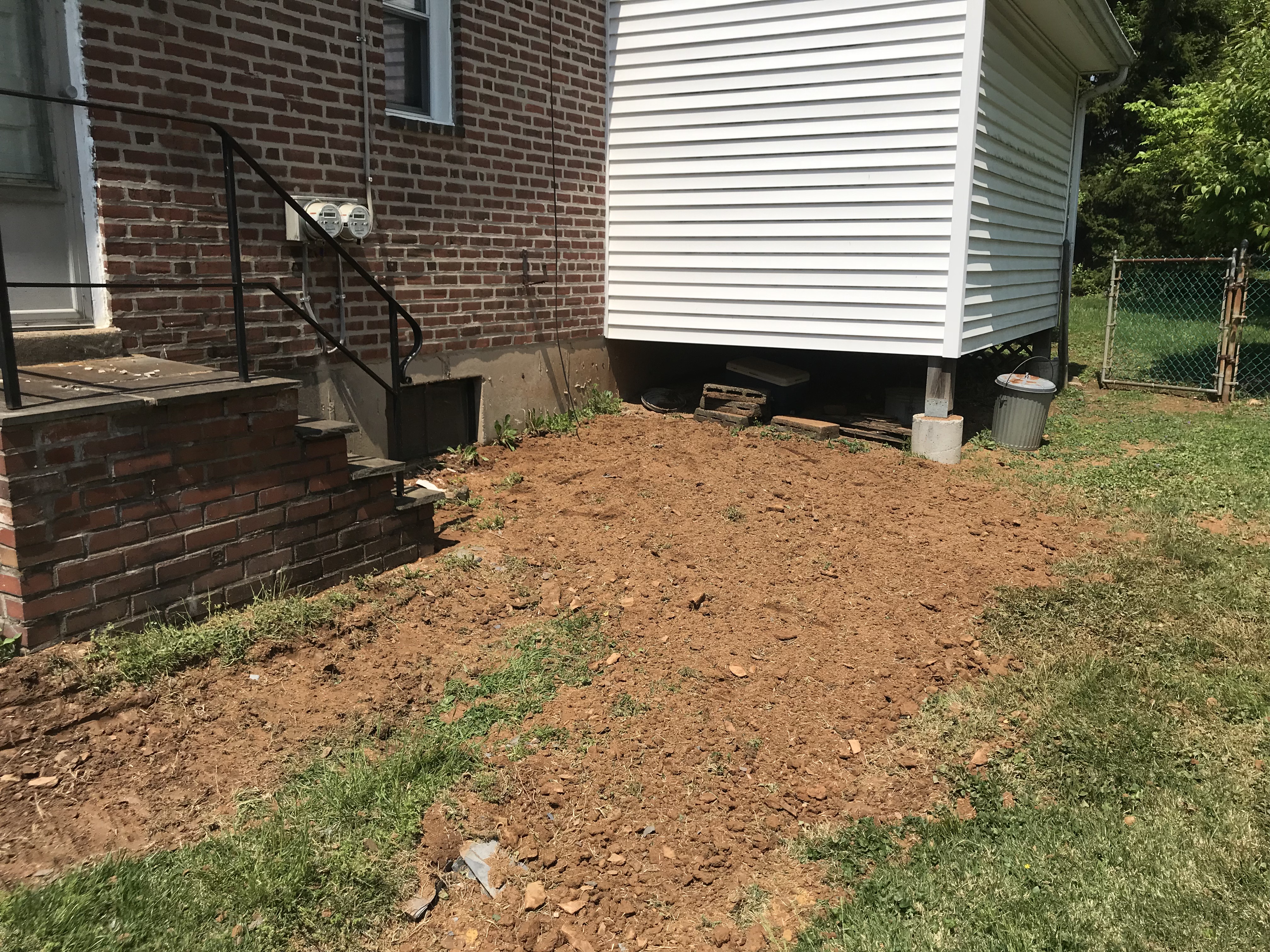
The process to remove a 500 gallon oil tank is pretty similar to removing a 290, 1000 gallon or larger tank.
Call the Experts
with Over 20 Years Experience
888-301-1050

